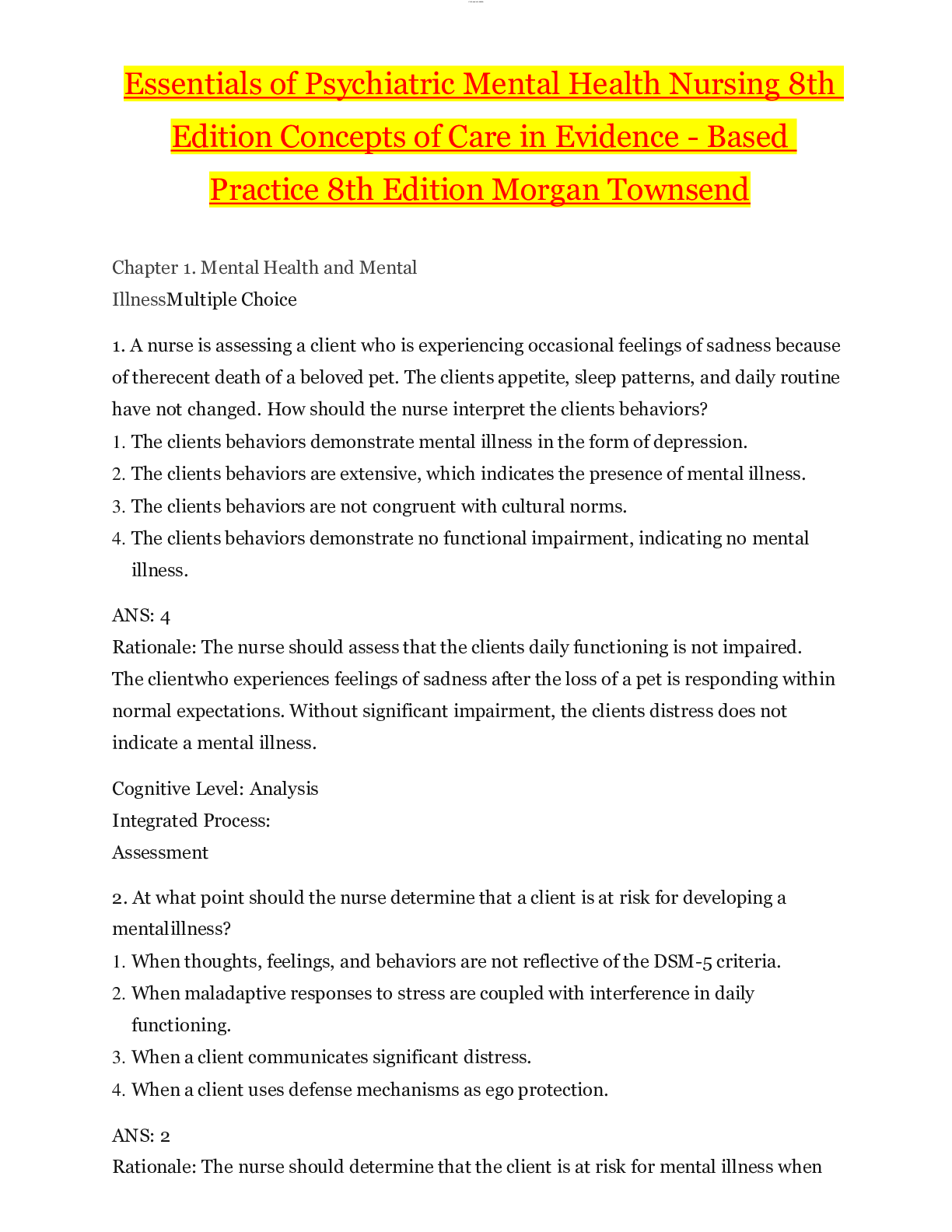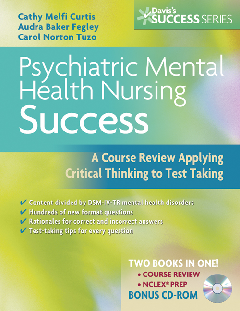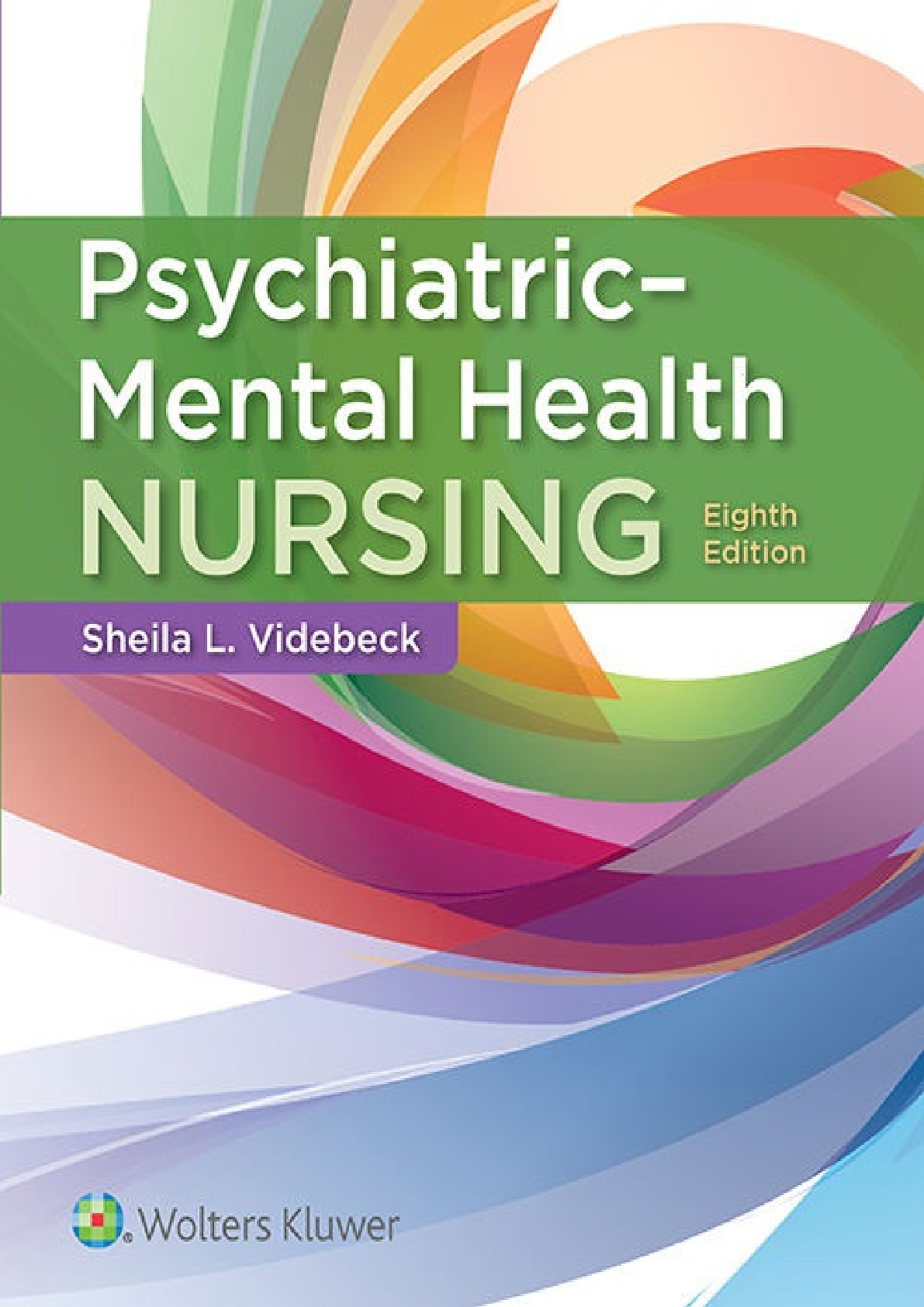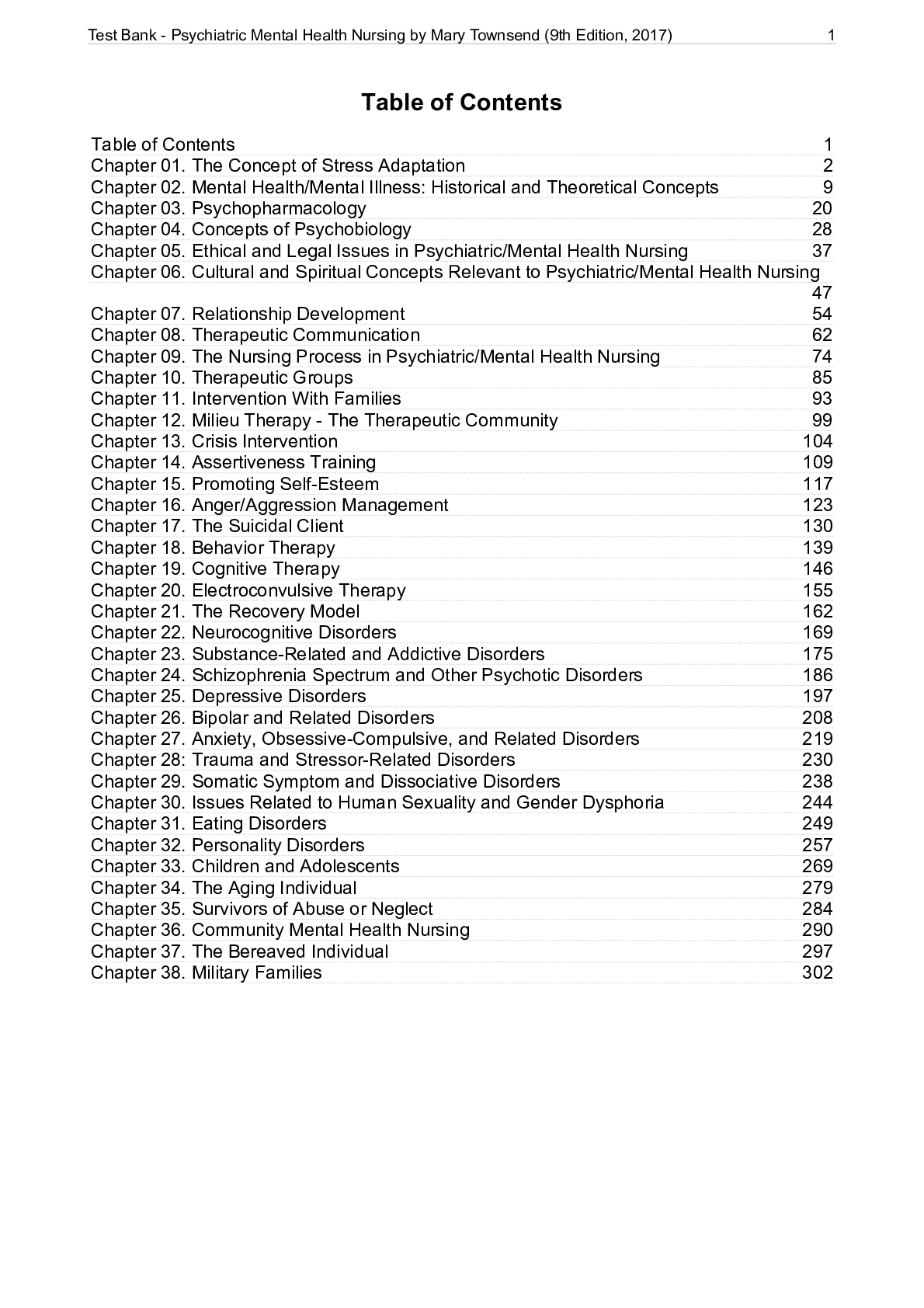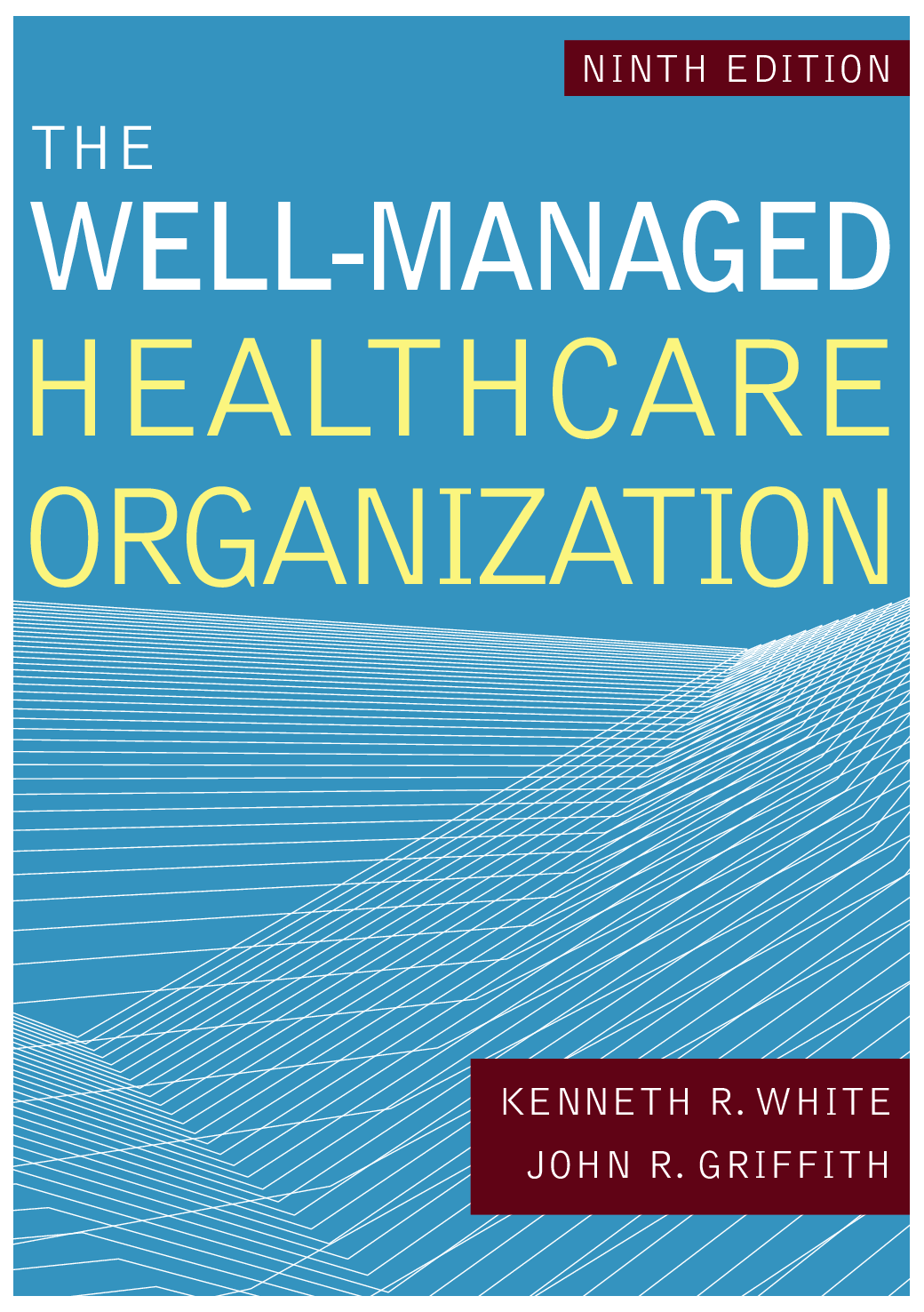*NURSING > E-Book > TEST BANK for Essentials of Psychiatric Mental Health Nursing Concepts of Care in Evidence Based-Pra (All)
TEST BANK for Essentials of Psychiatric Mental Health Nursing Concepts of Care in Evidence Based-Practice 7 th Edition. 952 Pages.
Document Content and Description Below
Essentials-of-Psychiatric-Mental-Health-Nursing-Concepts-of-Care-in-Evidence-Based-Practice-7th-Edit. Essentials of Psychiatric Mental Health Nursing Everything you need to succeed ... in class, in... clinical, on exams and on the NCLEX Introduction In recent years, a greater emphasis has been placed on the study of the organic basis for psychiatric illness. This "neuroscientific revolution," with its focus on the biological basis of behavior, has led to several mental illnesses now being considered as physical disorders resulting from malfunctions and / or malformations of the brain. That some behaviors and psychiatric illnesses can be traced to biological causes does not imply that psychosocial and sociocultural influences are totally discounted. For example, there is evidence that psychologi,cal interventions have an influence on brain activity that is similar to psychopharmacologic intervention (Furmark et al., 2002), and evidence exists that lifestyle choices, such as marijuana use, can precipitate mental illness (psychosis) in individuals with genetic vulnerability (NIH, 2015). Ongoing research will build a better understanding of the complex interplay of neural activities within the brain and in interaction with one's environment. The systems of biology, psychology, and sociology are not mutually exclusive-they are interacting systems. This interaction is clearly indicated by the fact that individuals experience biological changes in response to various environmental events. Indeed, one or several of these systems may, at various times, explain behavioral phenomena. This chapter focuses on the role of neurophysiological, neurochemical, genetic, and endocrine influences on psychiatric illness. An introduction to psychopharmacology is included (discussed in more detail in the following chapter), and various diagnostic procedures used to detect alteration in biological function that may contribute to psychiatric illness are identified. The implications for psychiatric mental health nursing are discussed. CORE CONCEPT Psychobiology The study of the biological foundations of cognitive, emotional, and behavioral processes. The Nervous System: An Anatomical Review The Brain The brain has three major divisions subdivided into six major parts: 1. Forebrain a. Cerebrum b. Diencephalon 2. Midbrain a. Mesencephalon 3. Hindbrain a. Pons b. Medulla c. Cerebellum Each of these structures is discussed individually. A summary is presented in Table 2-1. Cerebrum The cerebrum consists of a right and left hemisphere and constitutes the largest part of the human brain. The right and left hemispheres are connected by a deep groove, which houses a band of 200 million neurons (nerve cells) called the corpus callosum.Because each hemisphere controls different functions, information is processed through the corpus callasum so that each hemisphere is aware of the activity of the other. The surface of the cerebrum consists of gray matter and is called the cerebral cortex.The gray matter is so called because the neuron cell bodies of which16 UN IT 1 • Introduction to Psychiatric Mental Health Concepts TAB L E 2- 1 Structure and Function of the Brain STRUCTURE PRIMARY FUNCTION I. THE FOREBRAIN A. Cerebrum l. Frontal lobes 2. Parietal lobes 3. Temporal lobes 4. Occipital lobes B. Diencephalon 1. Thalamus 2. Hypothalamus 3. Limbic system II. THE MIDBRAIN A. Mesencephalon Ill. THE HINDBRAIN A. Pons B. Medulla C. Cerebellum Composed of two hemispheres separated by a deep groove that houses a band of 200 million neurons called the corpus callosum. The outer shell is called the cortex. It is extensively folded and consists of billions of neurons. The left hemisphere appears to deal with logic and solving problems. The right hemisphere may be called the "creative" brain and is associated with affect, behavior, and spatial-perceptual functions. Each hemisphere is divided into four lobes. Voluntary body movement, including movements that permit speaking, thinking and judgment formation, and expression of feelings. Perception and interpretation of most sensory information (including touch, pain, taste, and body position). Hearing, short-term memory, and sense of smell; expression of emotions through connection with limbic system. Visual reception and interpretation. Connects cerebrum with lower brain structures. Integrates all sensory input (except smell) on way to cortex; some involvement with emotions and mood. Regulates anterior and posterior lobes of pituitary gland; exerts control over actions of the autonomic nervous system; regulates appetite and temperature. Consists of medially placed cortical and subcortical structures and the fiber tracts connecting them with one another and with the hypothalamus. It is sometimes called the "emotional brain"-associated with feelings of fear and anxiety; anger and aggression; love, joy, and hope; and with sexuality and social behavior. Responsible for visual, auditory, and balance ("righting") reflexes. Regulation of respiration and skeletal muscle tone; ascending and descending tracts connect brain stem with cerebellum and cortex. Pathway for all ascending and descending fiber tracts; contains vital centers that regulate heart rate, blood pressure, and respiration; reflex centers for swallowing, sneezing, coughing, and vomiting. Regulates muscle tone and coordination and maintains posture and equilibrium. it is composed look gray to the eye. These gray matter cell bodies are thought to be the actual thinking structures of the brain. Another pair of masses of gray matter called basal ganglia is found deep within the cerebral hemispheres. They are responsible for certain subconscious aspects of voluntary movement, such as swinging the arms when walking, gesturing while speaking, and regulating muscle tone (Scanlon & Sanders, 2014). some animals, such as dogs and cats). Each hemisphere of the cerebral cortex is divided into the frontal lobe, parietal lobe, temporal lobe, and occipital lobe. These lobes, which are named for the overlying bones in the cranium, are identified in Figure 2-1. The Frontal Lobes Voluntary body movement is controlled by the impulses through the frontal lobes. The right frontal lobe controls motor activity on the left side of the body, and the left frontal lobe controls motor activity on the right side of the body. The frontal lobe may also play a role in the emotional experience, as evidenced by changes in mood and character after damage to this area. Particularly, the prefrontal cortex The cerebral cortex is identified by numerous folds, called gyri, and deep grooves between the folds, called sulci. This extensive folding extends the surface area of the cerebral cortex and thus permits the presence of millions more neurons than would be possible without it (as is the case in the brains ofCHAPTER 2 • Biological Implications 17 Premotor area General sensory area Frontal lobe Motor speech area A~~~ , association Temporal lobe / Pons Medulla area Parietal lobe Occipital lobe ~ al assoclatloo / area ----- Visual area FIGURE2-1 Left cerebral hemisphere showing some of the functional areas that have been mapped. (From Scanlon, V.C.,& Sanders, T.[2014] . Essentials of anatomy and physiology[7th ed.]. Philadelphia: F.A. Davis Company, with permission.) (the front part of the frontal lobe) plays an essential role in the regulation and adaptation of our emotions to new situations and may have implications in moral and spiritual responses (Sadock, Sadock, & Ruiz, 2015). Neuroimaging tests suggest there maybe some decreased activity in the frontal lobes of people with schizophrenia. The Parietal Lobes The parietal lobes manage somatosensory input, including touch, pain and pressure, taste, temperature, perception of joint and body position, and visceral sensations. The parietal lobes also contain association fibers linked to the primary sensory areas through which interpretation of sensory-perceptual information is made. Language interpretation is associated with the left hemisphere of the parietal lobe. The Temporal Lobes The upper anterior temporal lobe is concerned with auditory functions, and the lower part is dedicated to short-term memory. The sense of smell has a connection to the temporal lobes, as the impulses carried by the olfactory nerves end in this area of the brain. The temporal lobes also play a role in the expression of emotions through an interconnection with the limbic system. The left temporal lobe, along with the left parietal lobe, is involved in language interpretation. The Occipital Lobes The occipital lobes are the primary area of visual reception and interpretation. Visual perception, which gives individuals the ability to judge spatial relationships such as distance and to see in three dimensions, is also processed in this area. Language interpretation is influenced by the occipital lobes through an association with the visual experience. Diencephalon The second part of the fore brain is the diencephalon, which connects the cerebrum with lower structures of the brain. The major components of the diencephalon include the thalamus and the hypothalamus, which are part of a neuroanatomical loop of structures known as the limbic system. These structures are identified in Figure 2-2.18 UN IT 1 • Introduction to Psychiatric Mental Health Concepts Cingulate gyrus Hypothalamus Olfactory tract Septum pellucid um Amygdala Hippocampus FIGURE 2-2 Structures of the limbic system. (Adapted from Scanlon, V. C.,& Sanders,T.[2011]. Essentials ofanatomy and physiology[6th ed.]. Philadelphia: F.A. Davis Company, with permission.) Thalamus The thalamus integrates all sensory input (except smell) on its way to the cortex. This helps the cerebral cortex interpret the whole picture very rapidly rather than experiencing each sensation individually. The thalamus is also involved in temporarily blocking minor sensations so that an individual can concentrate on one important event when necessary. For example, an individual who is studying for an examination may be unaware of the clock ticking in the room, or even of another person walking into the room, because the thalamus has temporarily blocked these incoming sensations from the cortex. The impact of dopamine in the thalamus is associated with several neuropsychiatric disorders. Hypothalamus The hypothalamus is located just below the thalamus and just above the pituitary gland and has a number of diverse functions. 1. Regulation of the pituitary gland. Many hormones are regulated by "releasing factors" from the hypothalamus. When the hormones are required by the body, the releasing factors stimulate the release of the hormone from the anterior pituitary, and the hormone in tum stimulates its target organ to carry out its specific functions. 2. Direct neural control over the actions of the autonomic nervous system. The hypothalamus regulates the appropriate visceral responses during various emotional states. The actions of theautonomic nervous system are described later in this chapter. 3. Regulation of appetite, temperature, blood pressure, thirst, and circadian rhythms. Limbic System The limbic system is a group of structures including the amygdala, mammillary body, olfactory tract, hypothalamus, cingulate gyms, septum pellucidum, thalamus, hippocampus, and fornix. This system has been called the "emotional brain" and is associated with feelings of fear and anxiety; anger, rage, and aggression; and love, joy, and hope and with sexuality and social behavior. The amygdala seems to be a primary gateway for processing emotional stimuli, particularly responses to fear, anxiety, and panic. Mesencepha Ion The mesencephalon extends from the pons to the hypothalamus and is responsible for integration of various reflexes, including visual reflexes (e.g., automatically turning away from a dangerous object when it comes into view), auditory reflexes (e.g., automatically turning toward a sound that is heard), and righting reflexes (e.g., automatically keeping the head upright and maintaining balance). Pons The pons is part of the brainstem and is a relay station that transmits messages between various parts of the nervous system, including the cerebrum and cerebellum. It contains the central connections of cranial nerves V through VIII and centers for respiration and skeletal muscle tone. The pons is also associated with sleep and dreaming. Medulla The medulla is the connecting structure between the spinal cord and the pons, and all of the ascending and descending fiber tracts pass through it. The vital centers are contained in the medulla, and it is responsible for regulation of heart rate, blood pressure, and respiration. In the medulla are reflex centers for swallowing, sneezing, coughing, and vomiting. It also contains nuclei for cranial nerves IX through XII. The medulla, pons, and midbrain form the structure known as the brainstem. Cerebellum The cerebellum is separated from the brainstem by the fourth ventricle but has connections to the brainstem through bundles of fiber tracts (Figure 2-1). The functions of the cerebellum are concerned with CHAPTER 2 • Biological Implications 19 involuntary aspects of movement, such as coordination, muscle tone, and the maintenance of posture and equilibrium. Nerve Tissue The tissue of the central nervous system (CNS) consists of nerve cells called neurons that generate and transmit electrochemical impulses. The structure of a neuron is composed of a cell body, an axon, and dendrites. The cell body contains the nucleus and is essential for the continued life of the neuron. The dendrites are processes that transmit impulses toward the cell body, and the axon transmits impulses away from the cell body. The axons and dendrites are covered by layers of cells called neurogliathat form a coating, or "sheath," of myelin. Myelin is a phospholipid that provides insulation against short-circuiting of the neurons during their electrical activity and increases the velocity of the impulse. The white matter of the brain and spinal cord is so called because of the whitish appearance of the myelin sheath over the axons and dendrites. The gray matter is composed of cell bodies that contain no myelin. The three classes of neurons include afferent (sensory), efferent (motor), and interneurons. The afferent neuronscarry impulses from receptors in the internal and external periphery to the CNS, where they are then interpreted into various sensations. The efferent neuronscarry impulses from the CNS to effectorsin the periphery, such as muscles ( that respond by contracting) and glands ( that respond by secreting). Interneurons exist entirely within the CNS, and 99 percent of all nerve cells belong to this group. They may carry only sensory or motor impulses, or they may serve as integrators in the pathways between afferent and efferent neurons. They account in large part for thinking, feelings, learning, language, and memory. Synapses Information is transmitted through the body from one neuron to another. Some messages may be processed through only a few neurons, while others may require thousands of neuronal connections. The neurons that transmit the impulses do not actually touch each other. The junction between two neurons is called a synapse. The small space between the axon terminals of one neuron and the cell body or dendrites of another is called the synaptic cleft.Neurons conducting impulses toward the synapse are called presynaptic neurons, and those conducting impulses away are called postsynaptic neurons.20 UN IT 1 • Introduction to Psychiatric Mental Health Concepts Chemicals that act as neurotransmitters are stored in the axon terminals of the presynaptic neuron. An electrical impulse through the neuron causes the release of this neurotransmitter into the synaptic cleft. The neurotransmitter then diffuses across the synaptic cleft and combines with receptor sites that are situated on the cell membrane of the postsynaptic neuron. The type of combination determines whether or not another electrical impulse is generated. If an electrical impulse is generated, the result is called an excitatory response and the electrical impulse moves on to the next synapse, where the same process recurs. If an electrical impulse is not generated by the neurotransmitter-receptor site combination, the result is called an inhibitory response, and synaptic transmission is terminated. Activity at the neural synapse is relevant in the study of psychiatric disorders because excessive or deficient activity of neurotransmitters influence a variety of cognitive and emotional symptoms and the synapse is believed Axon of presynaptic neuron Neurotransmitter (acetylcholine) to be the primary site of activity for psychotropic drugs. The cell body or dendrite of the postsynaptic neuron also contains a chemical inactivator that is specific to the neurotransmitter that has been released by the presynaptic neuron. When the synaptic transmission has been completed, the chemical inactivator quickly inactivates the neurotransmitter to prevent unwanted, continuous impulses until a new impulse from the presynaptic neuron releases more neurotransmitter. Continuous impulses can result in excessive activity of neurotransmitters such as dopamine, which is believed to be responsible for symptoms such as hallucinations and delusions seen in people with schizophrenia. A schematic representation of a synapse is presented in Figure 2-3. Autonomic Nervous System The autonomic nervous system (ANS) is considered part of the peripheral nervous system. Its regulation Receptor site lnactivator (cholinesterase) Dendrite of postsynaptic neuron Inactivated neurotransmitter FIGURE 2-3 Impulse transmission at a synapse. The arrow indicates the direction of electrical impulses. (From Scanlon, V. C., & Sanders,T. [2014].Essentials of anatomy and physiology[7th ed.]. Philadelphia: F.A. Davis Company, with permission.)is modulated by the hypothalamus, and emotions exert a great deal of influence over its functioning . For this reason, the ANS has been implicated in the etiology of a number of psychophysiological disorders. The ANS has two divisions: the sympathetic and the parasympathetic. The sympathetic division is dominant in stressful situations and prepares the body for the fight-or-flight response (discussed in Chapter 1, "Mental Health and Mental Illness"). The fight-or-flight response causes an increase in heart rate and respirations and a decrease in digestive secretions and peristalsis . Blood is shunted to the vital organs and to skeletal muscles to ensure adequate oxygenation. The parasympathetic division dominates when an individual is in a relaxed , nonstressful condition. The heart and respirations are maintained at a normal rate, and secretions and peristalsis increase for normal digestion. Elimination functions are promoted. A schematic representation of the autonomic nervous system is presented in Figure 2-4. Neurotransmitters Neurotransmitters were described during the explanation of synaptic activity. They are being discussed separately and in detail because of the essential function they play in the role of human emotion and behavior and because they are the target for mechanism of action of many of the psychotropic medications . Neurotransmitters are chemicals that convey information across synaptic clefts to neighboring target cells. They are stored in small vesicles in the axon terminals of neurons. When the action potential , or electrical impulse, reaches this point, the neurotransmitters are released from the vesicles. They cross the synaptic cleft and bind with receptor sites on the cell body or dendrites of the adjacent neuron to allow the impulse to continue its course or to prevent the impulse from continuing. After the neurotransmitter has performed its function in the synapse, it returns to the vesicles to be stored and used again, or else it is inactivated and dissolved by enzymes . The process of being stored for reuse is called reuptake,a function that holds significance for understanding the mechanism of action of certain psychotropic medications. Many neurotransmitters exist in the central and peripheral nervous systems, but only a limited number have implications for psychiatry. Major categories include cholinergics, monoamines, amino acids, and neuropeptides. Each of these is discussed separately and summarized in Table 2-2. CHAPTER 2 • Biological Implications 21 Cholinergics Acetylcholine • Location: Acetylcholine was the first chemical to be identified and proven as a neurotransmitter. It is a major effector chemical in the ANS, producing activity at all sympathetic and parasympathetic presynaptic nerve terminals and all parasympathetic postsynaptic nerve terminals. It is highly significant in the neurotransmission that occurs at the junctions of nerve and muscles. Acetylcholinesterase is the enzyme that destroys acetylcholine or inhibits its activity. In the CNS, acetylcholine neurons innervate the cerebral cortex, hippocampus, and limbic structures. The pathways are especially dense through the area of the basal ganglia in the brain. • Functions: Functions of acetylcholine are manifold and include sleep, arousal , pain perception, modulation and coordination of movement, and memory acquisition and retention (Gilman & Newman , 2003) . • Possible implications in mental illness: Cholinergic mechanisms may have some role in certain disorders of motor behavior and memory, such as Parkinson's disease, Huntington's disease, and Alzheimer's disease. Monoarnines N orepinephrine • Location: Norepinephrine is the neurotransmitter that produces activity at the sympathetic postsynaptic nerve terminals in the ANS, resulting in the fight-or-flight responses in the effector organs. In the CNS, norepinephrine pathways originate in the pons and medulla and innervate the thalamus, dorsal hypothalamus, limbic system, hippocampus, cerebellum, and cerebral cortex. When norepinephrine is not returned for storage in the vesicles of the axon terminals, it is metabolized and inactivated by the enzymes monoamine oxidase (MAO) and catechol-0-methyl-transferase (COMT). • Functions: The functions of norepinephrine include the regulation of mood, cognition, perception, locomotion, cardiovascular functioning, and sleep and arousal (Gilman & Newman, 2003). • Possible implications in mental illness: The activity of norepinephrine has been implicated in certain mood disorders such as depression and mania, in anxiety states, and in schizophrenia (Sadock et al., 2015).22 UN IT 1 • Introduction to Psychiatric Mental Health Concepts Sympathetic Pregangl , nic neurons Chain of sympathetic ganglia Postganglionic neurons Inferior mesenteric ganglion Parasympathetic Eye Ciliary ganglion \ Ill .--- -r Preganglionic neuron Midbrain FIGURE 2-4 The autonomic nervous system. The sympathetic division is shown on the left, and the parasympathetic division is shown on the right (both divisions are bilateral) . (From Scanlon, V.C., & Sanders, T.[2014] .Essentials of anatomy and physiology[7th ed.]. Philadelphia: FA Davis Company , with permission.)CHAPTER 2 • Biological Implications 23 TABLE 2-2 Neurotransmitters in the Central Nervous System POSSIBLE IMPLICATIONS NEUROTRANSMITTER LOCATION/FUNCTION FOR MENTAL ILLNESS I. CHOLINER<ilCS A. Acetylcholine II. MONOAMINES A. Norepinephrine B. Dopamine C. Serotonin D. Histamine Ill. AMINO ACIDS A. Gamma-aminobutyric acid (GABA) B. Glycine C. Glutamate and aspartate IV. NEUROPEPTIDES A. Endorphins and enkephalins ANS: Sympathetic and parasympathetic presynaptic nerve terminals; parasympathetic postsynaptic nerve terminals CNS: Cerebral cortex, hippocampus, limbic structures, and basal ganglia Functions: Sleep, arousal, pain perception, movement, memory ANS: Sympathetic postsynaptic nerve terminals CNS: Thalamus, hypothalamus, limbic system, hippocampus, cerebellum, cerebral cortex Functions:Mood, cognition, perception, locomotion, cardiovascular functioning, and sleep and arousal Frontal cortex, limbic system, basal ganglia, thalamus, posterior pituitary, and spinal cord Functions: Movement and coordination, emotions, voluntary judgment, release of prolactin Hypothalamus, thalamus, limbic system, cerebral cortex, cerebellum, spinal cord Functions: Sleep and arousal, libido, appetite, mood, aggression, pain perception, coordination, judgment Hypothalamus Functions: Wakefulness; pain sensation and inflammatory response Hypothalamus, hippocampus, cortex, cerebellum, basal ganglia, spinal cord, retina Functions:Slowdown of body activity Spinal cord and brain stem Functions: Recurrent inhibition of motor neurons Pyramidal cells of the cortex, cerebellum, and the primary sensory afferent systems; hippocampus, thalamus, hypothalamus, spinal cord Functions:Relay of sensory information and in the regulation of various motor and spinal reflexes Hypothalamus, thalamus, limbic structures, midbrain, and brain stem; enkephalins are also found in the gastrointestinal tract Functions: Modulation of pain and reduced peristalsis ( enkephalins) Decreased levels: Alzheimer's disease, Huntington's disease, Parkinson's disease Increased levels: Depression Decreased levels: Depression Increased levels: Mania, anxiety states, schizophrenia Decreased levels: Parkinson's disease and depression Increased levels: Mania and schizophrenia Decreased levels: Depression Increased levels: Anxiety states Decreased levels: Depression Decreased levels: Huntington's disease, anxiety disorders, schizophrenia, and various forms of epilepsy Toxic levels: "Glycine encephalopathy" Decreased levels: Correlated with spastic motor movements Increased levels: Huntington's disease, temporal lobe epilepsy, spinal cerebellar degeneration, anxiety disorders, depressive disorders Decreased levels: Schizophrenia Modulation of dopamine activity by opioid peptides may indicate some link to the symptoms of schizophrenia24 UN IT 1 • Introduction to Psychiatric Mental Health Concepts POSSIBLE IMPLICATIONS NEUROTRANSMITTER LOCATION/FUNCTION FOR MENTAL ILLNESS B. Substance P Hypothalamus, limbic structures, midbrain, brain stem, thalamus, basal ganglia, and spinal cord; also found in gastrointestinal tract and salivary glands Decreased levels:Huntington's disease and Alzheimer's disease Increased levels:Depression Function:Regulation of pain C. Somatostatin Cerebral cortex, hippocampus, thalamus, basal ganglia, brain stem, and spinal cord Decreased levels:Alzheimer's disease Function:Depending on part of the brain being affected, stimulates release of dopamine, serotonin, norepinephrine, and acetylcholine, and inhibits release of norepinephrine, histamine, and glutamate. Also acts as a neuromodulator for serotonin in the hypothalamus. Increased levels:Huntington's disease Dopamine • Location: Dopamine pathways arise from the midbrain and hypothalamus and terminate in the frontal cortex, limbic system, basal ganglia, and thalamus. As with norepinephrine, the inactivating enzymes for dopamine are MAO and COMT. • Functions: Dopamine functions include regulation of movements and coordination, emotions, and voluntary decision-making ability, and because of its influence on the pituitary gland, it inhibits the release ofprolactin (Sadock et al., 2015). • Possible implications in mental illness: Increased levels of dopamine are associated with mania and schizophrenia. Decreased levels of dopamine have been associated with Parkinson 's Disease and depression. Serotonin • Location: Serotonin pathways originate from cell bodies located in the pons and medulla and project to areas including the hypothalamus, thalamus, limbic system, cerebral cortex, cerebellum, and spinal cord. Serotonin that is not returned to be stored in the axon terminal vesicles is catabolized by the enzyme MAO. • Functions: Serotonin may play a role in sleep and arousal, libido, appetite, mood, aggression, and pain perception. • Possible implications in mental illness: The serotonergic system has been implicated in anxiety states, depression, and schizophrenia (Sadock et al. 2015). Histamine • Location: The role of histamine in mediating allergic and inflammatory reactions has been well documented. Its role in the CNS as a neurotransmitter has only recently been confirmed, and the availability of information is limited. The highest concentrations of histamine are found within various regions of the hypothalamus. • Functions: Histaminic neurons in the posterior hypothalamus are associated with sustaining wakefulness (Gilman & Newman, 2003). The enzyme that catabolizes histamine is MAO. • Possible implications in mental illness: Although the exact processes mediated by histamine in the CNS are uncertain, some data suggest that histamine may play a role in depressive illness. Amino Acids Inhibitory Amino Acids Gamma-Aminobutyric Acid • Location: Gamma-aminobutyric acid (GABA) has a widespread distribution in the CNS, with high concentrations in the hypothalamus, hippocampus, cortex, cerebellum, and basal ganglia of the brain; the gray matter of the dorsal horn of the spinal cord; and the retina. GABA is catabolized by the enzyme GABA transaminase. • Functions: Inhibitory neurotransmitters, such as GABA, prevent postsynaptic excitation, interrupting the progression of the electrical impulse at the synaptic junction. This function is significant when slowdown of body activity is advantageous. Enhancement of the GABA system is the mechanism of action by which the benzodiazepines produce their calming effect. • Possible implications in mental illness: Alterations in the GABA system have been implicated in anxiety disorders, movement disorders (e.g., Huntington's disease), and various forms of epilepsy.Glycine • Location: The highest concentrations of glycine in the CNS are found in the spinal cord and brainstem. Little is known about the possible enzymatic metabolism of glycine. • Functions: Glycine appears to be the neurotransmitter of recurrent inhibition of motor neurons within the spinal cord and is possibly involved in the regulation of spinal and brainstem reflexes. • Possible implications in mental illness: Glycine has been implicated in the pathogenesis of certain types of spastic disorders and in "glycine encephalopathy," which is known to occur with toxic accumulation of the neurotransmitter in the brain and cerebrospinal fluid (Van Hove, Coughlin, & Sharer, 2013). Excitatory Amino Acids Glutamate and Aspartate • Location: Glutamate and aspartate appear to be primary excitatory neurotransmitters in the pyramidal cells of the cortex, the cerebellum, and the primary sensory afferent systems. They are also found in the hippocampus, thalamus, hypothalamus, and spinal cord. Glutamate and aspartate are inactivated by uptake into the tissues and through assimilation in various metabolic pathways. • Functions: Glutamate and aspartate function in the relay of sensory information and in the regulation of various motor and spinal reflexes. • Possible implications in mental illness: Alterations in these systems have been implicated in the etiology of certain neurodegenerative disorders, such as Huntington's disease, temporal lobe epilepsy, and spinal cerebellar degeneration. Recent studies have implicated increased levels of glutamate in anxiety and depressive disorders and decreased levels in schizophrenia (Bunney, Bunney, & Carlsson, 2012; Ouellet-Plamondon & George, 2012). Neuropeptides Neuropeptides act as signaling molecules in the CNS. Their activities include regulating processes related to sex, sleep, stress, pain, emotion, and social cognition, and they may contribute to symptoms and behaviors associated with psychosis, mood disorders, dementias, and autism spectrum disorders (Sadock et al., 2015). Hormonal neuropeptides are discussed in the "Neuroendocrinology" section of this chapter. Opioid Peptides • Location: Opioid peptides, which include the endorphins and enkephalins, have been widely studied. Opioid peptides are found in various CHAPTER 2 • Biological Implications 25 concentrations in the hypothalamus, thalamus, limbic structures, midbrain, and brainstem. Enkephalins are also found in the gastrointestinal tract. • Functions:With their natural morphine-like properties, opioid peptides are thought to have a role in pain modulation. They are released in response to painful stimuli and may be responsible for producing the analgesic effect following acupuncture. Opioid peptides alter the release of dopamine and affect the spontaneous activity of the dopaminergic neurons. • Possible implications in mental illness: Modulation of dopamine activity by opioid peptides may be associated with some symptoms of schizophrenia. Substance P • Location: Substance P was the first neuropeptide to be discovered. It is present in high concentrations in the hypothalamus, limbic structures, midbrain, and brainstem and is also found in the thalamus, basal ganglia, and spinal cord. • Functions: Substance P plays a role in sensory transmission, particularly in the regulation of pain. • Possible implications in mental illness: Recent studies demonstrated that people with depression and posttraumatic stress disorder (PTSD) had elevated levels of substance Pin their cerebral spinal fluid (Sadock et al., 2015). Somatostatin • Location: Somastatin (also called growth hormone - inhibiting) is found in the cerebral cortex, hippocampus, thalamus, basal ganglia, brainstem, and spinal cord. • Functions: Somatatin has been shown to stimulate dopamine, serotonin, norepinephrine, and acetylcholine and to inhibit norepinephrine, histamine, and glutamate. It also acts as a neuromodulator for serotonin in the hypothalamus, thereby regulating its release (i.e., controlling whether it is stimulated or inhibited). It is possible that somatostatin may serve this function for other neurotransmitters as well. • Possible implications in mental illness: High concentrations of somatostatin have been reported in brain specimens of clients with Huntington's disease and low concentrations in those with Alzheimer's disease. CORE CONCEPT Neuroendocrinology Study of the interaction between the nervous system and the endocrine system and of the effects of various hormones on cognitive, emotional, and behavioral functioning.26 UN IT 1 • Introduction to Psychiatric Mental Health Concepts Neuroendocrinology Human endocrine functioning has a strong foundation in the CNS under the direction of the hypothalamus, which has direct control over the pituitary gland. The pituitary gland has two major lobes-the interior lobe (also called the adenohypophysis)and the posterior lobe (also called the neurohypophysis). The pituitary gland is only about the size of a pea, but despite its size and because of the powerful control it exerts over endocrine functioning in humans, it is sometimes called the "master gland." (Figure 2-5 shows the hormones of the pituitary gland and their target organs.) Many of the hormones subject to hypothalamus-pituitary regulation may have implications for behavioral functioning. Discussion of these hormones is summarized in Table 2-3. Pituitary Gland The Posterior Pituitary (Neurohypophysis) The hypothalamus has direct control over the posterior pituitary through efferent neural pathways. Two Posterior pituitary [Show More]
Last updated: 1 year ago
Preview 1 out of 2 pages
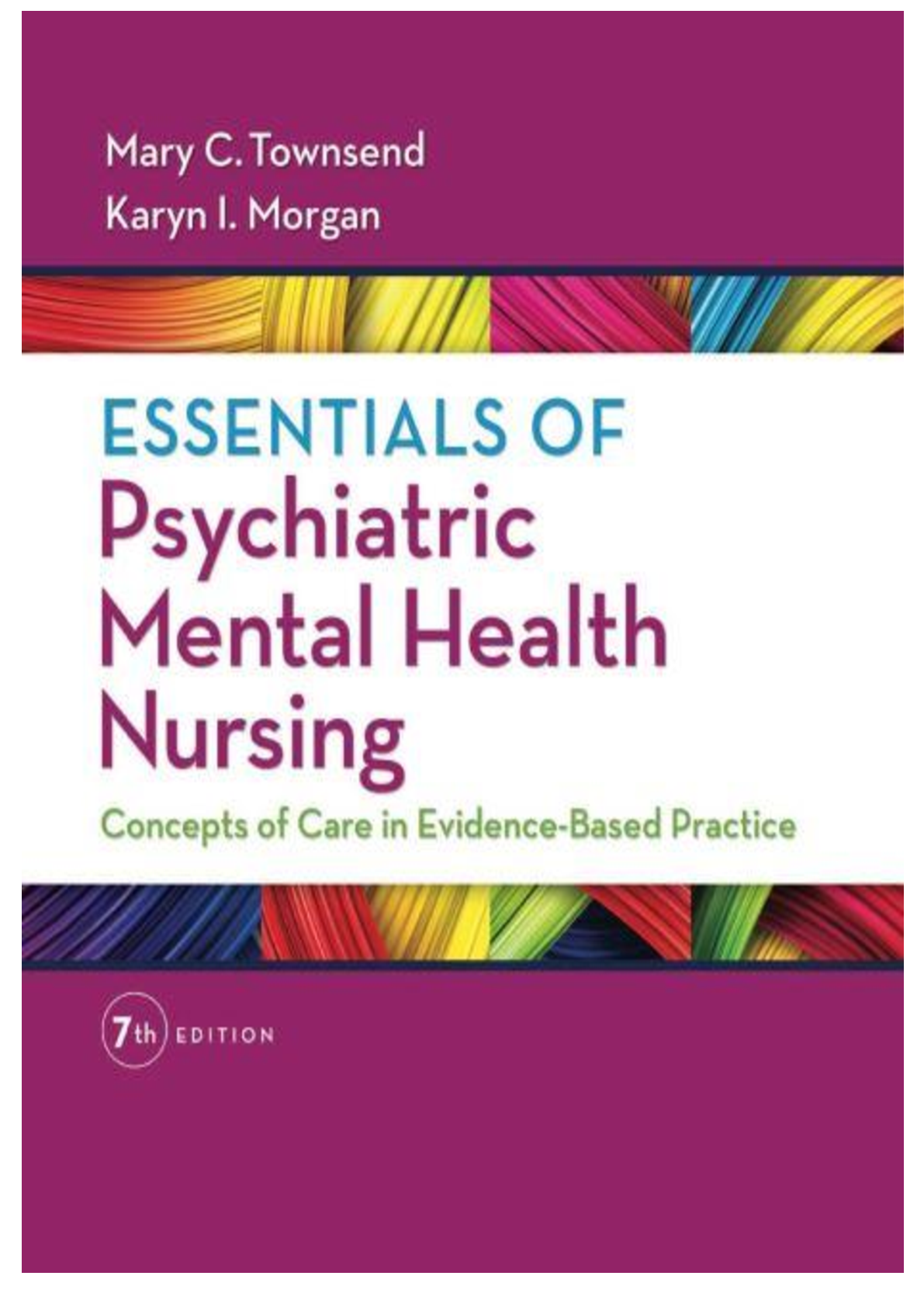
Reviews( 0 )
Document information
Connected school, study & course
About the document
Uploaded On
May 26, 2021
Number of pages
2
Written in
Additional information
This document has been written for:
Uploaded
May 26, 2021
Downloads
0
Views
68

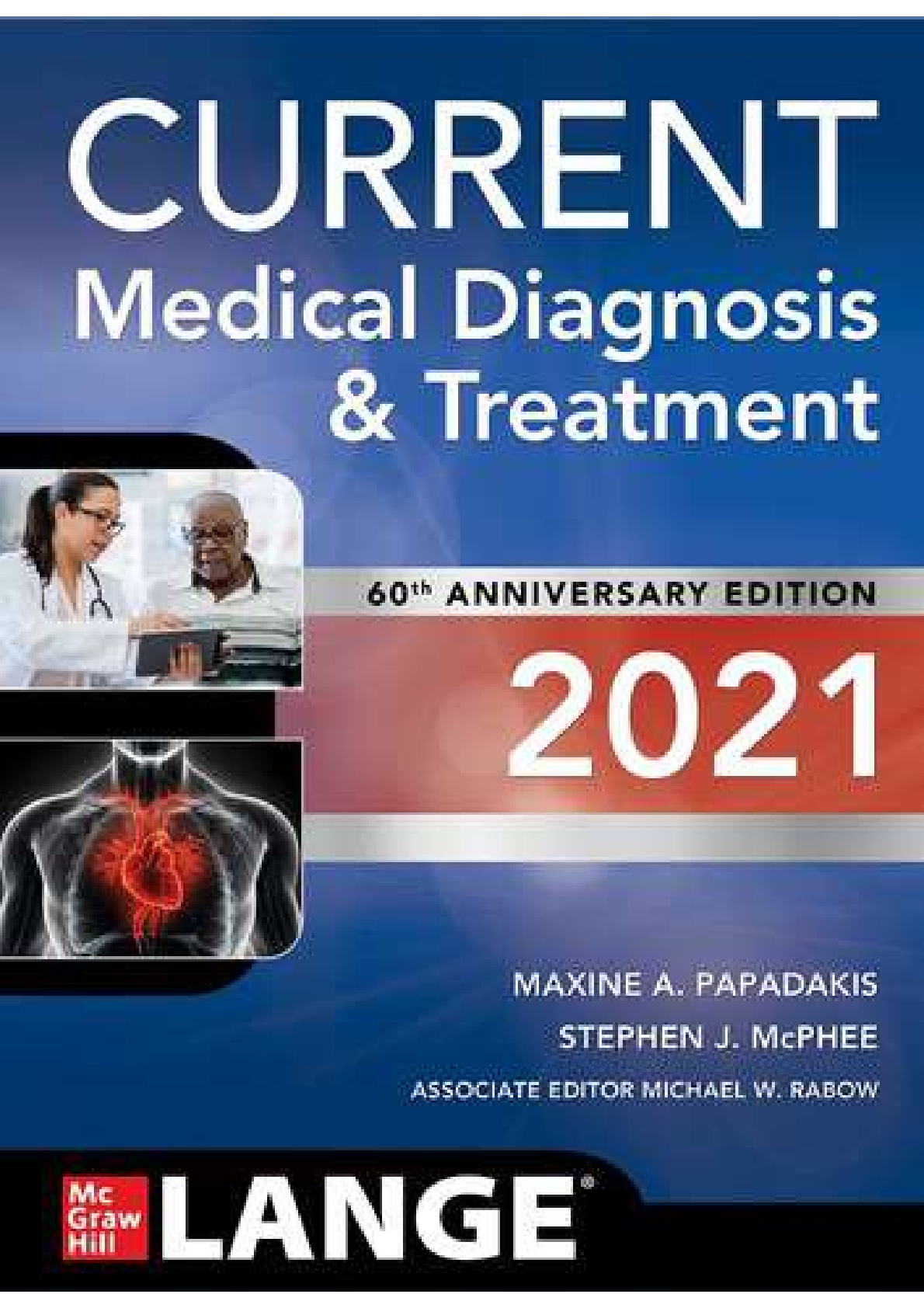
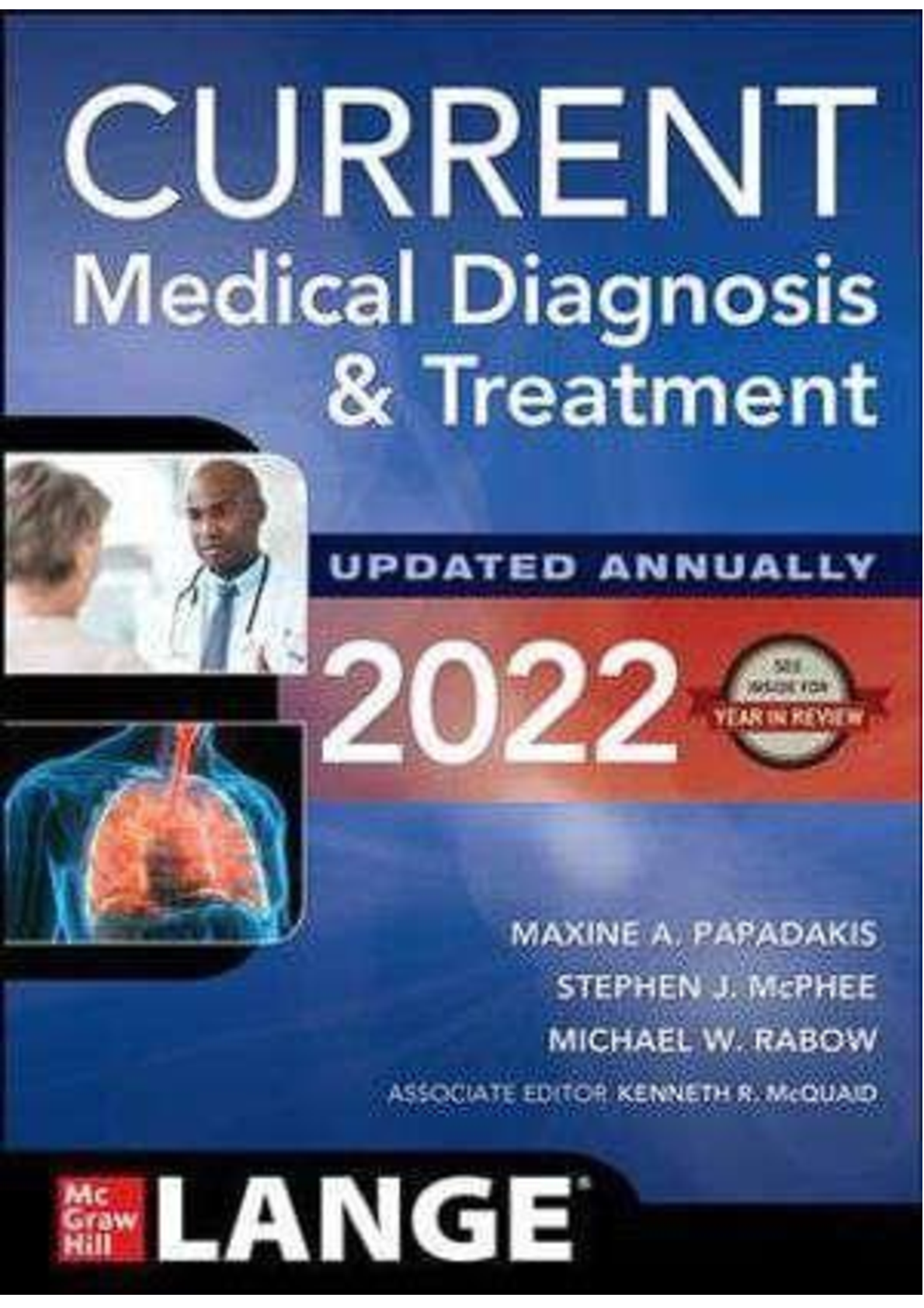
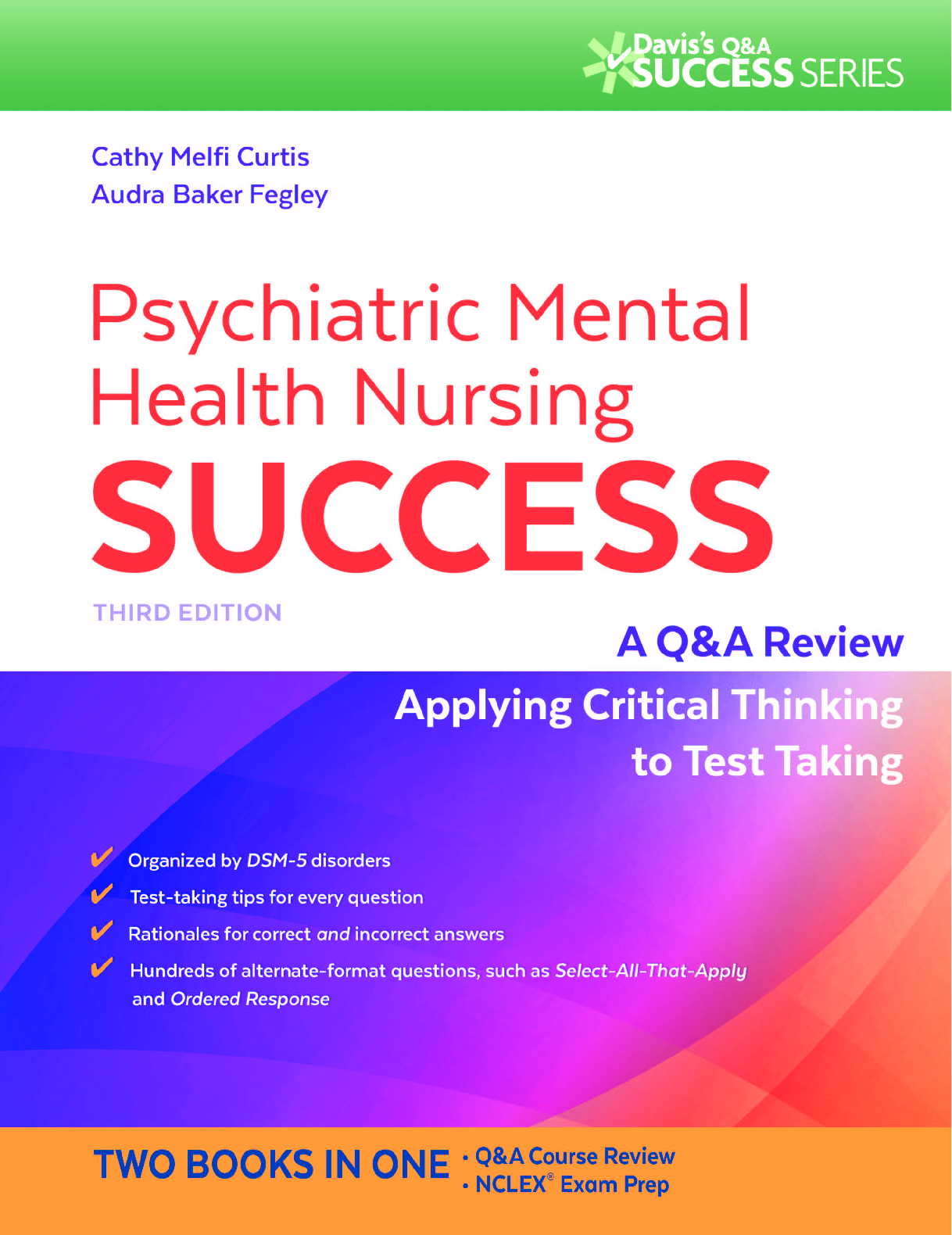


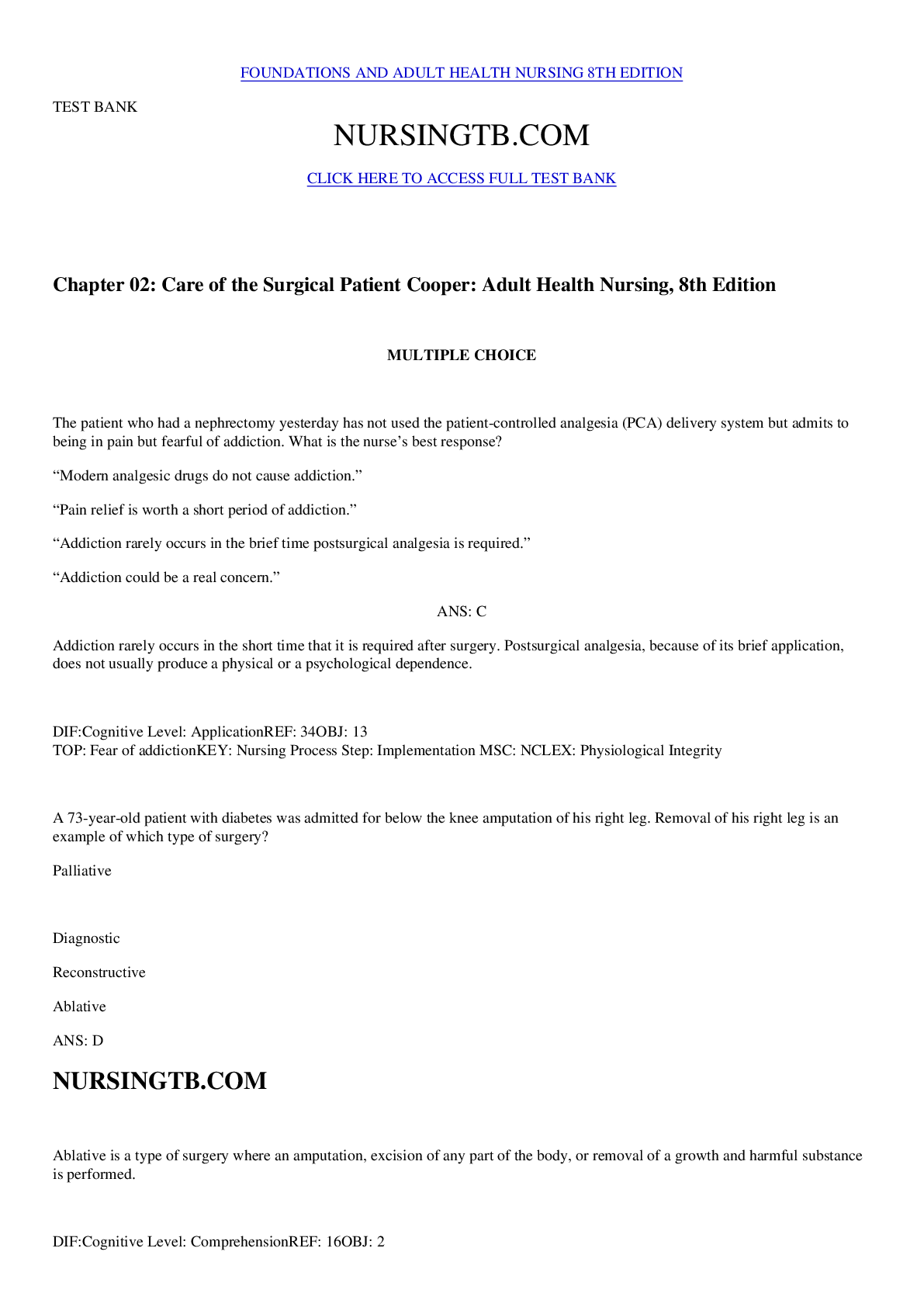

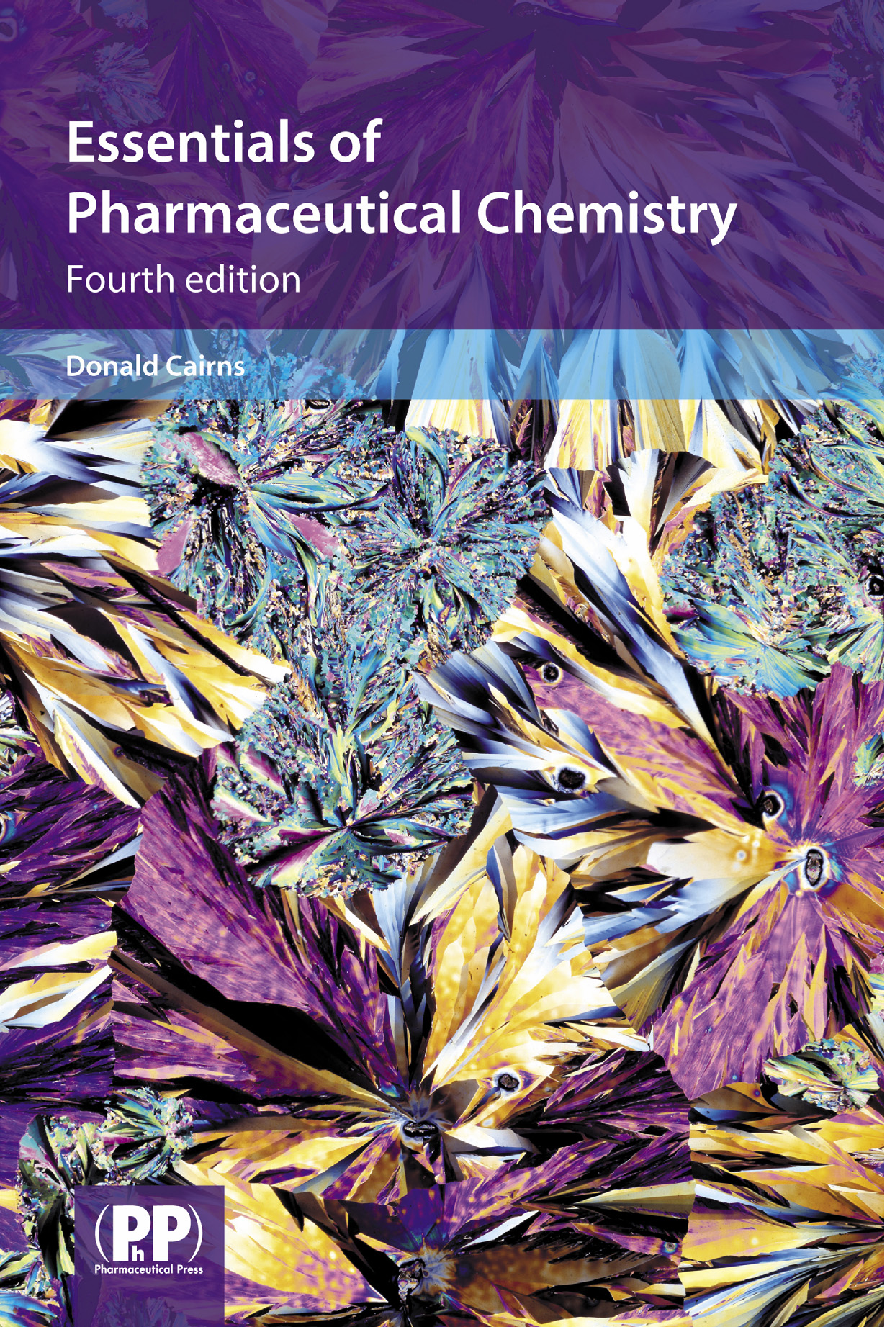
PSYCHIATRIC MENTAL HEALTH NURSING SUCCESS %0D A Q & A REVIEW APPLYING CRITICAL%0D THINKING TO TEST TAKING 3RD EDITION.png)

 by Whaites, Eric_Drage, NicholasEric Whaites, Nicholas Drage.png)
